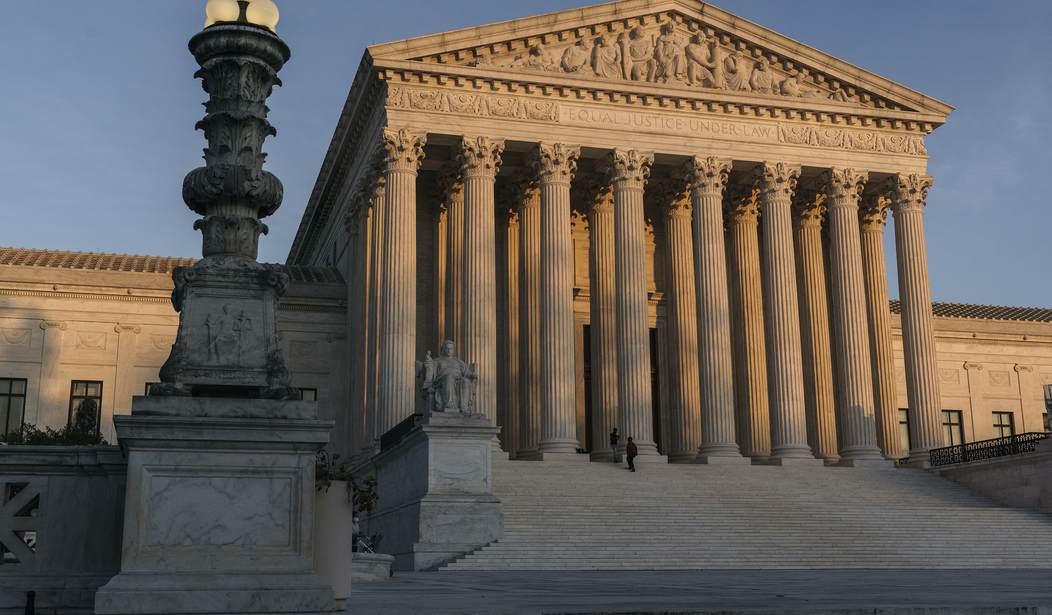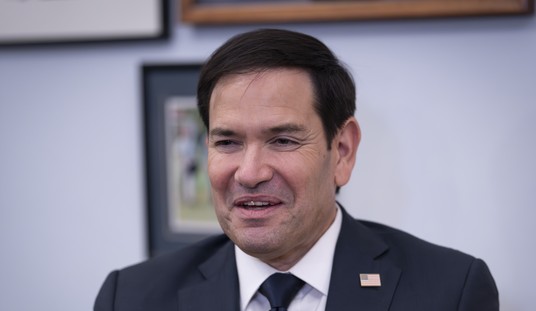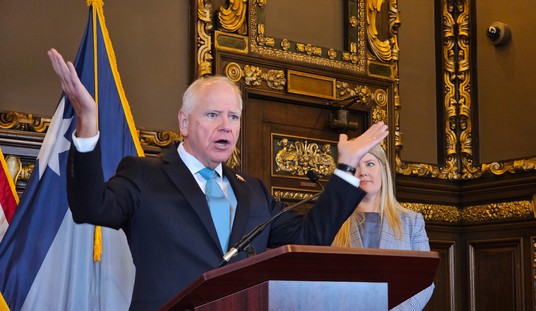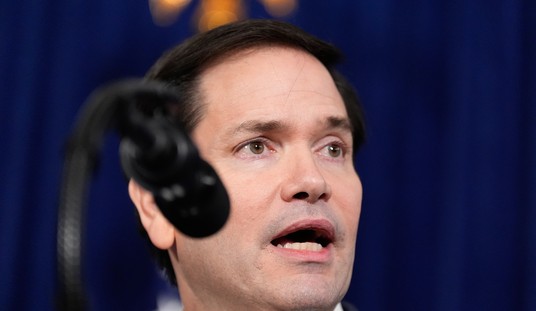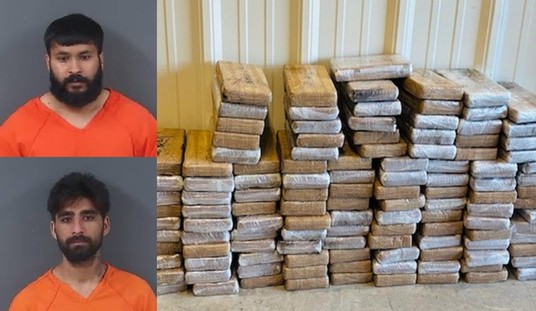Okay, if I don't get crackin' with the skinny on these Supreme Court decisions, they'll wind up old and fat — NTTAWWT. (No comment on whether or not I resemble that remark.)
The Court handed down six decisions in March, and we're going to tackle them all in one fell swoop. While these are largely procedural/technical decisions, there's a mixed bag in terms of the splits and alignments: There's only one unanimous decision. That one's authored by Chief Justice John Roberts.
There's an 8-1 decision, authored by Justice Ketanji Brown Jackson, with Justice Neil Gorsuch dissenting, but interestingly enough, of the three 7-2 decisions, two have Jackson and Gorsuch teamed up as the dissenters. (The other has Justices Clarence Thomas and Samuel Alito in the minority.) And lastly, there's one 5-4 decision, again featuring the guys versus the gals.
So, for those who like to keep tabs on this sort of thing, there are zero (out of six) party-line decisions in this batch — unless you consider the Thomas-Alito wing of the Court's (purported) conservatives its own separate sub-party.
So, let's get down to brass tacks:
March 2025 Decisions
City and County of San Francisco v. EPA
Date: March 4, 2025
Author: Alito
Split: 5-4
Dissent: Barrett, Sotomayor, Kagan, Jackson
Appeal From: 9th Circuit
Under the Clean Water Act (CWA), 33 U.S.C. §1151 et seq., the Environmental Protection Agency (EPA) and authorized state agencies issue permits that impose requirements on entities that wish to discharge “pollutants” into the waters of the United States. A critical component of the CWA regulatory scheme is the National Pollutant Discharge Elimination System (NPDES), which makes it unlawful to discharge pollutants into covered bodies of water unless authorized by permit. EPA v. California ex rel. State Water Resources Control Bd., 426 U. S. 200, 205. These permits typically include “effluent limitations” on discharges that restrict the “quantities, rates, and concentrations of chemical, physical, biological, and other constituents.” §1362(11). Failure to comply with permit limitations exposes permittees to civil penalties and even criminal prosecution. §§1319(c) and (d). Under what is known as the “permit shield” provision, however, an entity that adheres to the terms of its permit is deemed to be compliant with the Act. §1342(k).
This case involves a challenge to “end-result” requirements—permit provisions that do not spell out what a permittee must do or refrain from doing but instead make a permittee responsible for the quality of the water in the body of water into which the permittee discharges pollutants. The City of San Francisco operates two combined wastewater treatment facilities that process both wastewater and stormwater. Combined Sewer Overflow (CSO) Control Policy, 59 Fed. Reg. 18689; 75 F. 4th 1074, 1082 (CA9). During periods of heavy precipitation, the combination of wastewater and stormwater may exceed the facility’s capacity, and the result may be the discharge of untreated water, including raw sewage, into the Pacific Ocean or the San Francisco Bay. 59 Fed. Reg. 18689; EPA, Office of Water, Combined Sewer Overflows: Guidance for Permit Writers, p. 1–1; 75 F. 4th, at 1082–1083. In 1994, the EPA adopted its CSO Control Policy, which requires municipalities with combined systems to take prescribed measures and to develop and implement a Long-Term Control Plan, and provides for a two-phase permitting process. 59 Fed. Reg. 18691, 18696.
For many years, San Francisco’s NPDES permit for its Oceanside facility was renewed without controversy, but in 2019, the EPA issued a renewal permit that added two end-result requirements. 75 F. 4th, at 1084–1085. The first of these prohibits the facility from making any discharge that “contribute[s] to a violation of any applicable water quality standard” for receiving waters. Id., at 1085. The second provides that the City cannot perform any treatment or make any discharge that “create[s] pollution, contamination, or nuisance as defined by California Water Code section 13050.” Ibid. (internal quotation marks omitted). San Francisco argued that the end-result requirements exceed EPA’s statutory authority, but the Ninth Circuit denied the city’s petition for review. The court held that §1311(b)(1)(C) authorizes EPA to impose “any” limitations ensuring applicable water quality standards are satisfied in a receiving body of water.
Whether the Clean Water Act allows EPA (or an authorized state) to impose generic prohibitions in NPDES permits that subject permit holders to enforcement for exceedances of water quality standards without identifying specific limits to which their discharges must conform.
Holding: Reversed and remanded.
Section 1311(b)(1)(C) does not authorize the EPA to include “end result” provisions in NPDES permits. Determining what steps a permittee must take to ensure that water quality standards are met is the EPA’s responsibility, and Congress has given it the tools needed to make that determination.
Skinny: It's not so much whether you win or lose, it's how you play the game. (The EPA can say what steps a permitted entity must follow to ensure water safety, but they can't work backward from the end result/outcome to hold an entity responsible.)
Date: March 5, 2025
Author: Thomas
Split: 7-2
Dissent: Jackson, Gorsuch
Appeal From: Federal Circuit
The Department of Veterans Affairs (VA) applies a “benefit-of-the-doubt rule” that tips the scales in a veteran’s favor when evidence regarding any issue material to a service-related disability claim is in “approximate balance.” 38 U. S. C. §5107(b). Petitioners are veterans who applied for service-connected post-traumatic stress disorder (PTSD) disability benefits and were dissatisfied with the VA’s resolution of their claims. Petitioner Joshua Bufkin claimed that his PTSD stemmed from his military service, but the VA found no clear link. Petitioner Norman Thornton obtained service-connected PTSD disability benefits, but the VA denied his most recent request to increase his disability rating. These adverse determinations were reviewed de novo by the Board of Veterans’ Appeals, which rendered final decisions on behalf of the VA denying the claims. Petitioners then challenged the adverse determinations before the U. S. Court of Appeals for Veterans Claims (Veterans Court). Under §7261(a), the Veterans Court reviews legal issues de novo and factual issues for clear error. And under §7261(b)(1), the Veterans Court must “take due account” of the VA’s application of the benefit-of-the-doubt rule. Applying those standards, the Veterans Court affirmed the VA’s adverse benefit determinations, finding that the Board’s approximate-balance determinations were not clearly erroneous. The petitioners then appealed to the Federal Circuit, challenging the Veterans Court’s legal interpretation of §7261(b)(1), and arguing that the statutory command to “take due account” of the VA’s application of the benefit-of-the-doubt rule requires the Veterans Court to review the entire record de novo and decide for itself whether the evidence is in approximate balance. The Federal Circuit rejected this argument and affirmed.
Must the Veterans Court ensure that the benefit-of-the-doubt rule was properly applied during the claims process in order to satisfy 38 U.S.C. § 7261(b)(1), which directs the Veterans Court to "take due account" of VA's application of that rule?
Holding: Affirmed.
The VA’s determination that the evidence regarding a service-related disability claim is in “approximate balance” is a predominantly factual determination reviewed only for clear error.
Skinny: Tie goes to the runner (the veteran), but the ump who makes the original call (the VA) gets deference as to whether it is, in fact, a tie or not, and only gets overruled if they clearly botched it.
Date: March 21, 2025
Author: Roberts
Split: 9-0
Dissent: N/A
Appeal From: 7th Circuit
Patrick Thompson took out three loans totaling $219,000 from one bank. After the bank failed, the Federal Deposit Insurance Corporation (FDIC) became responsible for collecting the outstanding loans. During a call with the FDIC’s loan servicer, Thompson disputed the $269,120.58 balance shown on his invoice (which consisted of the $219,000 Thompson had borrowed plus interest), stating that he had “no idea where the 269 number comes from” and that he “borrowed . . .$110,000.” Thompson made similar statements in a later call with FDIC contractors. Thompson was later charged with violating 18 U.S.C. §1014, which prohibits “knowingly mak[ing] any false statement” to influence the FDIC’s action on any loan. A jury found Thompson guilty, and he moved for acquittal, arguing that his statements were not false because he had in fact borrowed $110,000, even though he later borrowed more. The courts below concluded that they did not need to reach that argument because they read §1014 to also criminalize misleading statements, and Thompson’s statements were at least misleading.
Whether 18 U.S.C. § 1014, which prohibits making a "false statement" for the purpose of influencing certain financial institutions and federal agencies, also prohibits making a statement that is misleading but not false.
Holding: Vacated and remanded.
Section 1014, which prohibits “knowingly mak[ing] any false statement,” does not criminalize statements that are misleading but not false.
Skinny: You have to tell the truth to the FDIC, but maybe not the whole truth. (Thompson's statement may have been technically true — just not comprehensively so. Either way, the statute criminalizes false statements, not misleading statements, and, as the Court puts it, "A misleading statement can be true, and a true statement is not false." Sort of like the difference between "misinformation" and "malinformation.")
Date: March 21, 2025
Author: Thomas
Split: 7-2
Dissent: Gorsuch, Jackson
Appeal From: 2nd Circuit
Title 18 U.S.C. §924(c) subjects a person who uses or carries a firearm during a “crime of violence” to a mandatory minimum sentence of five years. §§924(c)(1)(A)(i) and (D)(ii). Section 924(c)(3)(A) defines a “crime of violence” as a felony that “has as an element the use, attempted use, or threatened use of physical force against the person or property of another.” To determine whether an offense falls within §924(c)(3)(A)’s “elements clause,” the Court applies the categorical approach, asking whether the offense in question always involves the use, attempted use, or threatened use of force. Here, Salvatore Delligatti was convicted of violating §924(c) after he recruited gang members to kill a suspected police informant and gave them a loaded revolver to carry out the job.
Before trial, Delligatti moved to dismiss his §924(c) charge on the ground that the charge lacked the required predicate crime of violence, but the District Court denied his motion. Delligatti’s indictment charged him with attempted murder under the violent-crimes-in-aid-of-racketeering (VICAR) statute, §1959(a)(5), which required proof that Delligatti had attempted second-degree murder under New York law. Delligatti argued that a VICAR offense predicated on New York second-degree murder is not a crime of violence under §924(c)’s elements clause because homicide under New York law can be committed by omission, defined as the failure to perform a legal duty. The Second Circuit affirmed the District Court’s conclusion that New York attempted second-degree murder is a crime of violence for purposes of §924(c)(3)(A).
Whether a crime that requires proof of bodily injury or death, but can be committed by failing to take action, has as an element the use, attempted use, or threatened use of physical force.
Holding: Affirmed.
The knowing or intentional causation of injury or death, whether by act or omission, necessarily involves the “use” of “physical force” against another person within the meaning of §924(c)(3)(A).
Skinny: Killing me softly is still killing me. Same goes for attempting to do so.
Date: March 26, 2025
Author: Gorsuch
Split: 7-2
Dissent: Thomas, Alito
Appeal From: 5th Circuit
The Gun Control Act of 1968 (GCA) requires those engaged in importing, manufacturing, or dealing in firearms to obtain federal licenses, keep sales records, conduct background checks, and mark their products with serial numbers. The Act defines “firearm” to include “(A) any weapon . . . which will or is designed to or may readily be converted to expel a projectile by the action of an explosive; [and] (B) the frame or receiver of any such weapon.” 18 U. S. C. §921(a)(3). Recent years have witnessed profound changes in how guns are made and sold, with companies now able to sell weapon parts kits that individuals can assemble into functional firearms at home. These kits vary widely in how complete they come and in how much work is required to finish them. Sales have grown exponentially, with law enforcement agencies reporting a dramatic increase in untraceable “ghost guns” used in crimes—from 1,600 in 2017 to more than 19,000 in 2021.
In 2022, the Bureau of Alcohol, Tobacco, Firearms and Explosives (ATF) adopted a rule interpreting the Act to cover weapon parts kits that are “designed to or may readily be converted to expel a projectile,” 27 CFR §478.11, and “partially complete, disassembled, or nonfunctional” frames or receivers, §478.12(c). Before ATF could enforce its rule, gun manufacturers and others filed what they described as a facial challenge under the Administrative Procedure Act, arguing that the GCA cannot be read to reach weapon parts kits or unfinished frames or receivers. The District Court agreed and vacated the rule. The Fifth Circuit affirmed, holding that §921(a)(3)(A) categorically does not reach weapon parts kits regardless of completeness or ease of assembly, and that §921(a)(3)(B) reaches only finished frames and receivers.
- Whether "a weapon parts kit that is designed to or may readily be completed, assembled, restored, or otherwise converted to expel a projectile by the action of an explosive," 27 C.F.R. 478.11, is a "firearm" regulated by the Act.
- Whether "a partially complete, disassembled, or nonfunctional frame or receiver" that is "designed to or may readily be completed, assembled, restored, or otherwise converted to function as a frame or receiver," 27 C.F.R. 478.12(c), is a "frame or receiver" regulated by the Act.
Holding: Reversed and remanded.
The ATF’s rule is not facially inconsistent with the GCA.
Skinny: You need an FFL to import, manufacture, or sell gun pieces/parts, and not just fully assembled weapons.
Date: March 26, 2025
Author: Jackson
Split: 8-1
Dissent: Gorsuch
Appeal From: 10th Circuit
This case concerns the powers given a bankruptcy trustee under §544(b) of the Bankruptcy Code to set aside, or “avoid,” certain fraudulent transfers of a debtor’s assets. See 11 U.S.C. §544(b)(1). Respondent is the bankruptcy trustee of a failed Utah-based business whose shareholders misappropriated $145,000 in company funds to satisfy their personal federal tax liabilities. Respondent filed an “avoidance” suit against the United States seeking to claw back the misappropriated funds for the benefit of the bankruptcy estate. He filed the action pursuant to §544(b), which allows a trustee to “avoid any transfer of an interest of the debtor . . . that is voidable under applicable law by a creditor holding an unsecured claim.” But to prevail under §544(b), a trustee must identify an “actual creditor” who could have voided the transaction under applicable law outside of bankruptcy proceedings. In this case, respondent invoked Utah’s fraudulent-transfer statute—which gives creditors a cause of action to invalidate certain transfers by a debtor—as the “applicable law” underlying his §544(b) claim. The Government argued that respondent’s §544(b) claim failed because respondent could not identify an “actual creditor” that could have voided the fraudulent transfer because sovereign immunity would bar any such Utah cause of action against the Government. The Bankruptcy Court disagreed, concluding that §106(a) of the Bankruptcy Code—which waives the Government’s sovereign immunity “with respect to” some 59 Bankruptcy Code provisions including §544—also waives immunity for the Utah cause of action nested within the §544(b) claim. The District Court adopted the Bankruptcy Court’s decision and the Tenth Circuit affirmed.
Whether a bankruptcy trustee may avoid a debtor's tax payment to the United States under Section 544(b) when no actual creditor could have obtained relief under the applicable state fraudulent-transfer law outside of bankruptcy.
Holding: Reversed.
Section 106(a)’s sovereign-immunity waiver applies only to a §544(b) claim itself and not to state-law claims nested within that federal claim.
Skinny: The Government's going to keep its revenue, even if it came via misappropriated funds, thank you very much.
You can check out prior installments of The Skinny on SCOTUS series here.

